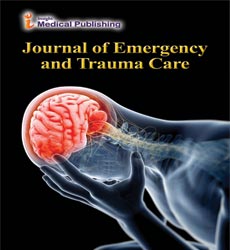Abstract
Revenue Lost from Unbilled Procedures on Trauma Patients in the Emergency Department
Background: Trauma services are an important yet expensive facet of emergency medical care. One way to recuperate costs is billing for procedures. In academic medical centers, attending physicians must attest for procedures performed by residents in order to bill for them. Objective: We aimed to quantify lost revenue from unbilled procedures performed on trauma patients. Methods: We evaluated all trauma activations for one year. Data included demographics, procedure performed, service performing the procedure, procedure cost, procedure billing status, were recorded. Resident procedures not attested by attending staff were considered lost revenue. Procedure-specific charges were obtained from Current Procedural Terminology 2015 edition. Results: A total of 7001 patient charts were reviewed, 65% male. A total of 2678 patients had billable procedures, of which 1035 (39%) were unbilled. The most common procedures were laceration repair, reduction/fracture care, and Focused Assessment with Sonography in Trauma (FAST). Billing for procedures by trauma residents was less than those by emergency medicine residents (47% vs. 82% respectively, p<.0001). Billing for procedures by consulting residents was less than those by emergency medicine residents (22% vs. 82% respectively, p<.0001) and trauma surgery residents (22% vs. 47% respectively, p=<.0001). Billed procedure charges totaled $1,257,386; Unbilled procedure charges totaled $875,328. The median charge per billed ($529, IQR $374-$960) and unbilled ($515, IQR $383- $1110) procedure was similar (p=0.85). Conclusion: Significant potential revenue was lost through unbilled procedures by consulting residents. Increasing billing for procedures by consulting residents would have the most impact on revenue.
Author(s): Katherine Dalzotto, Samuel Hertz, Daniel Saadeh, Pranav S Khambete, Ashwath Gunasekar, Roozbeh A Ahmadi, John J Como and Jon W Schrock
Abstract | Full-Text | PDF
Share This Article
Google Scholar citation report
Citations : 42
Journal of Emergency and Trauma Care received 42 citations as per Google Scholar report
Abstracted/Indexed in
- Google Scholar
Open Access Journals
- Aquaculture & Veterinary Science
- Chemistry & Chemical Sciences
- Clinical Sciences
- Engineering
- General Science
- Genetics & Molecular Biology
- Health Care & Nursing
- Immunology & Microbiology
- Materials Science
- Mathematics & Physics
- Medical Sciences
- Neurology & Psychiatry
- Oncology & Cancer Science
- Pharmaceutical Sciences
